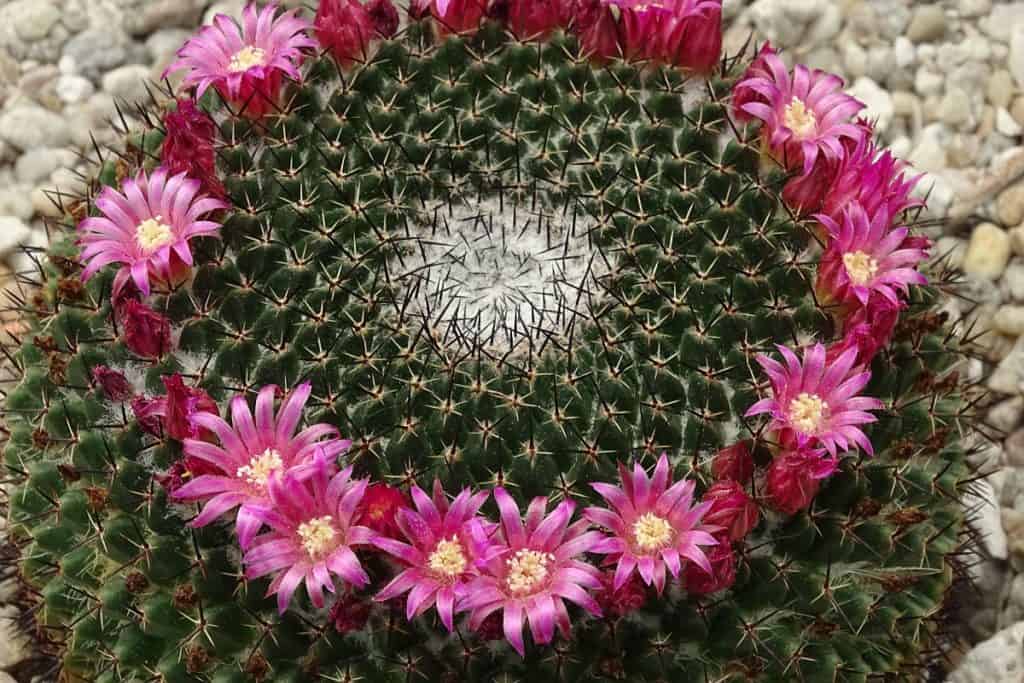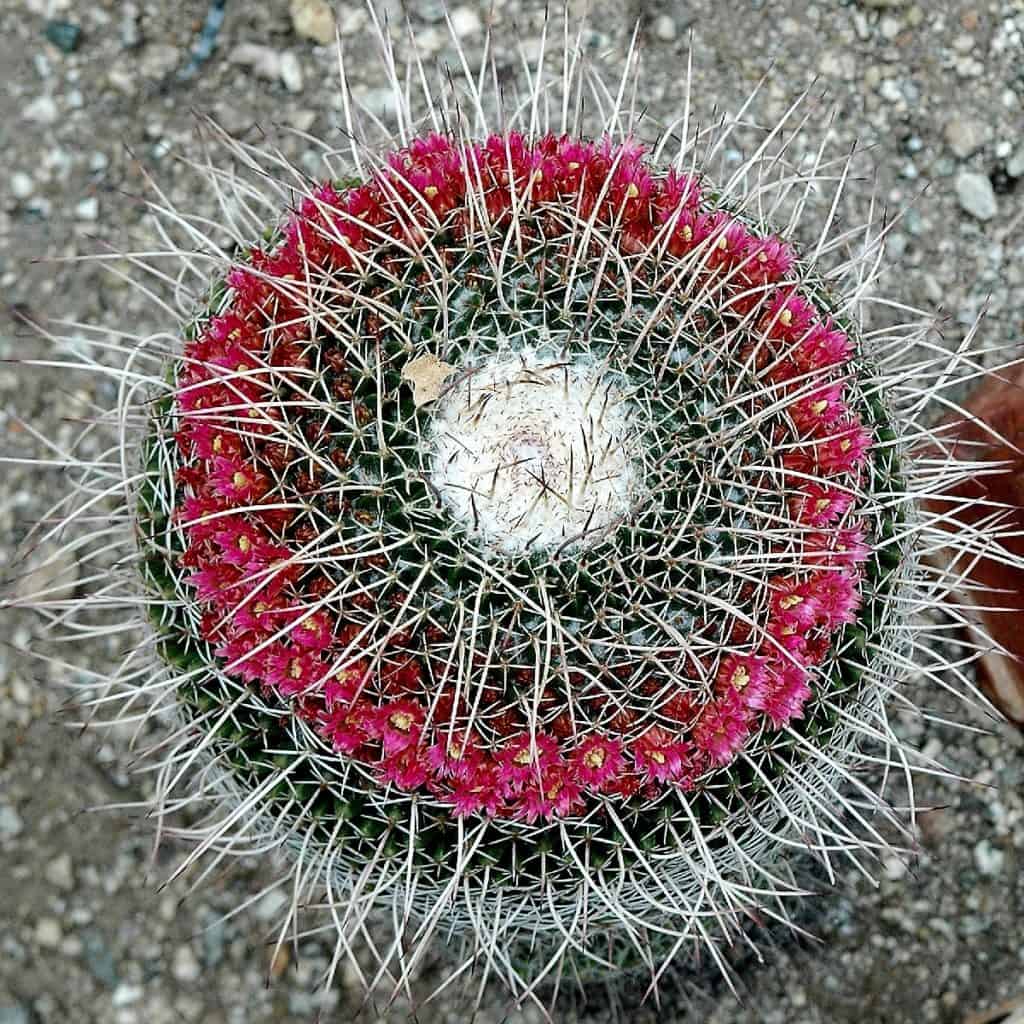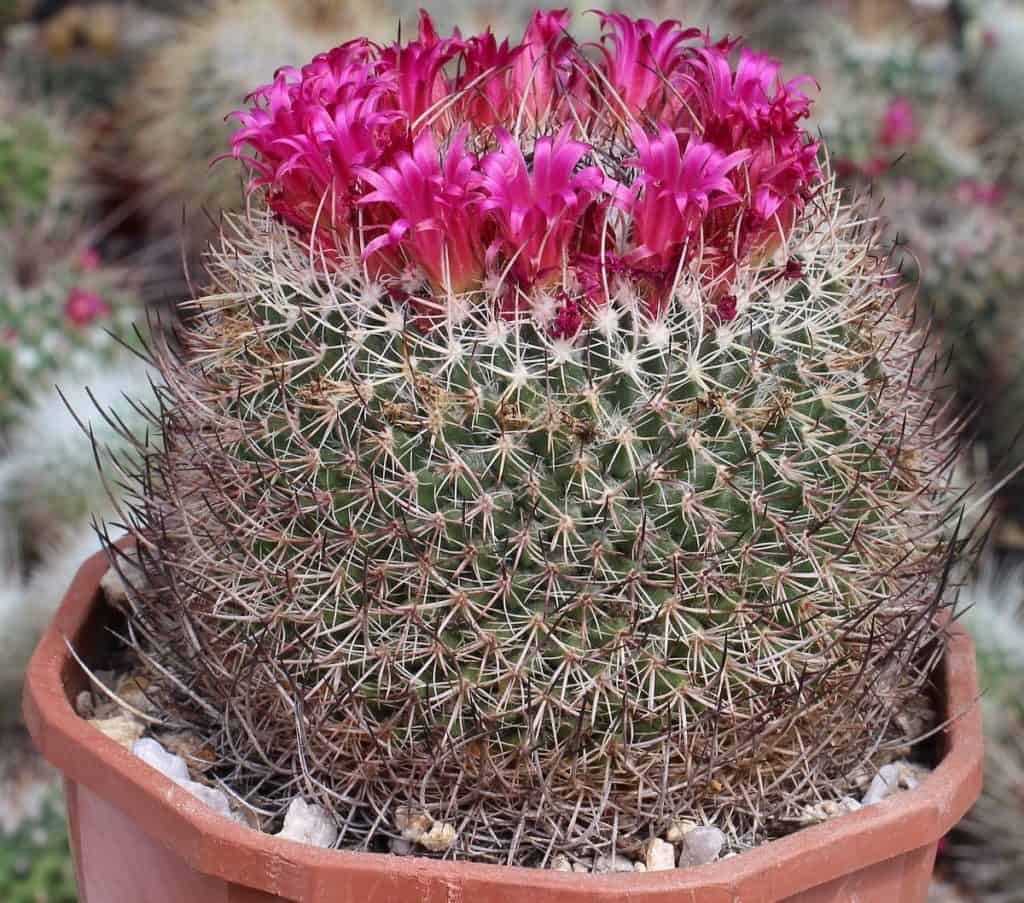The Strange and Spiky Mammillaria mystax Will Blow Your Mind
Get ready to be amazed by one of the strangest and most eye-catching cacti out there – the Mammillaria mystax! With its round, spiky body covered in hundreds of fishhook-like spines, this miniature cactus looks like it came straight out of a Dr. Seuss book. But beyond its bizarre and captivating appearance, the Mammillaria mystax has some incredible traits that will leave you stunned. Keep reading to discover the mysteries of this peculiar plant!

Contents
About Mammillaria mystax
Native to the Mexican states of Oaxaca, Guerrero, Puebla and Hidalgo, the Mammillaria mystax is a solitary cactus that typically grows as a single globular stem. However, it can sometimes form small clumps as it matures. The stem is densely covered in tubercles tipped with clusters of reddish hooked spines that give it an otherworldly, shaggy appearance.
In spring, a crown of small reddish-purple flowers emerges from the top of the stem, adding an extra pop of color to this already striking plant. Despite its ferocious looks, the Mammillaria mystax stays a relatively tiny size, with stems rarely exceeding 6 inches (15 cm) in height and 4 inches (10 cm) in diameter.
Related Post:
39 Mammillaria Cactus Types and Care [With Pictures]
Caring for Your Mammillaria mystax
Light Requirements
The Mammillaria mystax thrives in bright and intense light. If growing outdoors, it can handle direct sunlight for most of the day. For indoor plants, situate it in a south or west-facing window that gets at least 6 hours of direct sun. You can also use a grow light, placing the cactus about 6-12 inches (15-30 cm) below the light source for 12-16 hours per day.
Soil Medium
Like most cacti, the fishhook mammillaria needs a well-draining soil mix to prevent rot. A quality cactus soil mix is ideal, or you can make your own by combining one part regular potting soil with one part perlite or coarse sand. The soil should have an acidic to neutral pH between 6.0-7.5.

Water
During the spring and summer growing season, water the Mammillaria mystax thoroughly but infrequently, allowing the soil to fully dry out between waterings. A deep soak every 2-3 weeks is typically sufficient. Cut back substantially on water in winter when the plant is dormant.
Fertilizer
Feed your cactus every 4-6 weeks in spring and summer using a balanced fertilizer diluted to half-strength. Look for one specifically formulated for cacti and succulents to avoid excess nitrogen.
Temperature
The ideal temperature range for this cactus is 70-90°F (21-32°C) during spring and summer. In winter, it can tolerate cooler temps down to around 50°F (10°C), but no colder to prevent cold damage.
Potting and Repotting
The Mammillaria mystax has modestly-sized roots and can stay potted for several years before becoming rootbound. Choose a container with a drainage hole and only go up an inch or two in pot size when it’s time to repot to prevent the soil from staying wet too long.

Pests & Problems
This cactus is fairly resistant to pests, but can occasionally fall victim to mealybugs or scale insects. Inspect it regularly and wipe off any pests with an alcohol-dipped cotton swab. Rot from overwatering is the biggest threat, so take care not to let it sit in moisture.
Mammillaria mystax Propagation Methods
The Mammillaria mystax can be easily propagated from offsets, seeds or stem cuttings to grow new plants. Here are some step-by-step guides:
From Offsets
- Offsets, also called pups, are the baby plants that sometimes form around the base of the parent cactus
- Gently detach offsets that have their own rooting system by twisting or cutting them off with a sterile knife
- Allow the offsets to dry out for several days before replanting in fresh cactus soil
- Water sparingly until new growth appears
From Seeds
- Use a well-draining seed starting mix
- Sprinkle seeds on the surface and cover with a thin layer of soil
- Keep the soil lightly moist until germination, which can take 2-8 weeks
- As soon as the first spines appear, expose seedlings to direct sunlight
- Transplant into individual pots once they’re a few inches tall
From Stem Cuttings
- Use a sharp, sterile knife or scissors to cut off the top 2-3 inches of the stem
- Allow the cuttings to callous over for 7-10 days before planting
- Fill a small pot with fresh cactus soil and make a hole for the cutting
- Insert the cutting upright, taking care not to bury the areoles (spine clusters)
- Keep soil barely moist until roots form and new growth appears
No matter which propagation method you choose, be patient as mammillaria cacti are relatively slow-growing. With proper soil, sun exposure and minimal water, your new plants should eventually grow into peculiar, spiky wonders just like the mother plant!
